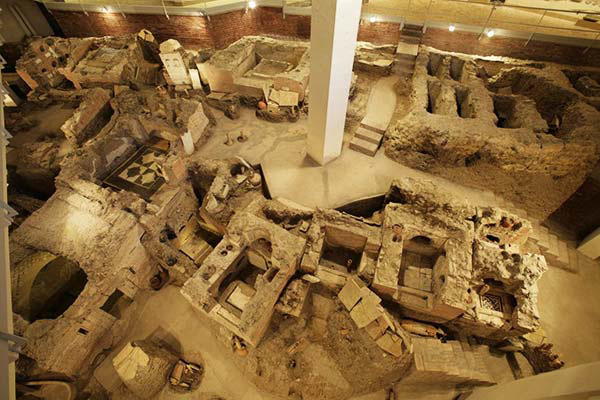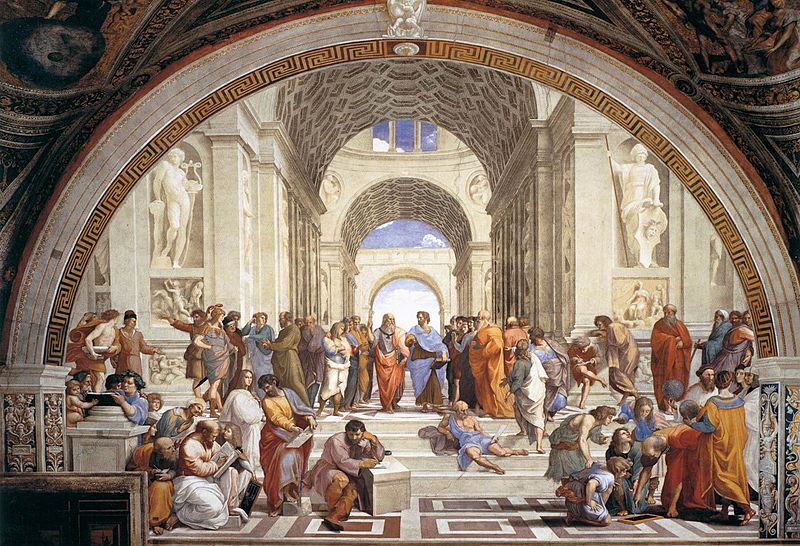Instrumental and vocal classical music is an iconic part of Italian identity, spanning experimental art music and international fusions to symphonic music and opera. Opera is integral to Italian musical culture, and has become a major segment of popular music. The Neapolitan song, canzone Napoletana, and the cantautori singer-songwriter traditions are also popular domestic styles that form an important part of the Italian music industry, alongside imported genres like jazz, rock and hip hop. Italian folk music is an important part of the country's musical heritage, and spans a diverse array of regional styles, instruments and dances.
Characteristics
Like other elements of Italian culture, Italian music is generally eclectic. No parochial protectionist movement has ever attempted to keep Italian music pure and free from foreign influence, except briefly under the Fascist regime of the 1920s and 30s. As a result, Italian music has kept elements of the many peoples that have dominated or influenced the country, including Germanic tribes, Arabs, Greeks, French and Spanish. The country's historical contributions to music are also an important part of national pride. The relatively recent history of Italy includes the development of an opera tradition that has spread throughout the world; prior to the development of Italian identity or a unified Italian state, the Italian peninsula contributed to important innovations in music including the development of musical notation and Gregorian chant.
Immigrant populations from around the Mediterranean, especially Greece, the Balkans and North Africa, have established large communities in the southern peninsula over the last thousand years. As a result, folk music on Sicily and the southern Italian mainland display features typical of elsewhere in the Mediterranean. These include an excessive nasality in the voice and an extremely ornamental approach to pitch Lomax's description of southern Italian singing is widely cited: "A voice as pinched and strangulated and high-pitched as any in Europe. The singing expression is one of true agony, the throat is distended and flushed with strain, the brow knotted with a painful expression. Many tunes are long and highly ornamented in Oriental style." Melody has typically been important in most Italian musical forms, even at the expense of lyrics and harmoni complexity. This is true in opera, popular music and even, to some extent, in modern text-centered styles such as Italian hip hop and the music of the cantautori singer-songwriters.
Social identity
Italy was not unified politically until the 19th century. The drive towards unification led to efforts to create a sense of Italian identity, famously described by the Italian statesman Massimo d’Azeglio: “We have created Italy; now we have to create Italians.”Abroad, Italian culture and society are often stereotyped, associating all Italian music with certain styles. For example, some years ago the Mayor of Venice banned gondoliers from singing Neapolitan songs for the tourists, most of whom requested "‘O sole mio" and other songs typical only of Naples but widely regarded abroad as characteristic of all Italian music.
Allegiance to music is integrally woven into the social identity of Italians but no single style has been considered a characteristic "national style". Most folk musics are localized, and unique to a small region or city. Italy's classical legacy, however, is an important point of the country's identity, particularly opera; traditional operatic pieces remain a popular part of music and an integral component of national identity. The musical output of Italy remains characterized by "great diversity and creative independence (with) a rich variety of types of expression".
With the growing industrialization that accelerated during the 20th century, Italian society gradually moved from an agricultural base to an urban and industrial center. This change weakened traditional culture in many parts of society; a similar process occurred in other European countries, but unlike them, Italy had no major initiative to preserve traditional musics. Immigration from North Africa, Asia, and other European countries led to further diversification of Italian music. Traditional music came to exist only in small pockets, especially as part of dedicated campaigns to retain local musical identities:)
Politics
Music and politics have been intertwined for centuries in Italy. Just as many works of art in the Italian Renaissance were commissioned by royalty and the Roman Catholic Church, much music was likewise composed on the basis of such commissions—incidental court music, music for coronations, for the birth of a royal heir, royal marches, and other occasions. Composers who strayed ran certain risks. Among the best known of such cases was the Neapolitan composer Domenico Cimarosa, who composed the Republican hymn for the short-lived Neapolitan Republic of 1799. When the republic fell, he was tried for treason along with other revolutionaries. Cimarosa was not executed by the restored monarchy, but he was exiled.
Music also played a role in the unification of the peninsula. During this period, some leaders attempted to use music to forge a unifying cultural identity. One example is the chorus "Va Pensiero" from Giuseppe Verdi's opera Nabucco. The opera is about ancient Babylon, but the chorus contains the phrase "O mia Patria", ostensibly about the struggle of the Israelites, but also a thinly veiled reference to the destiny of a not-yet-united Italy; the entire chorus became the unofficial anthem of the Risorgimento the drive to unify Italy in the 19th century. Even Verdi's name was a synonym for Italian unity because "Verdi" could be read as an acronym for Vittorio Emanuele Re d'Italia, Victor Emanuel King of Italy, the Savoy monarch who eventually became Victor Emanuel II, the first king of united Italy. Thus, "Viva Verdi" was a rallying cry for patriots and often appeared in graffiti in Milan and other cities in what was then part of Austro-Hungarian territory. Verdi had problems with censorship before the unification of Italy. His opera Un ballo in maschera was originally entitled Gustavo III and was presented to the San Carlo opera in Naples, the capital of the Kingdom of the Two Sicilies, in the late 1850s. The Neapolitan censors objected to the realistic plot about the assassination of Gustav III, King of Sweden in the 1790s. Even after the plot was changed, the Neapolitan censors still rejected it.
Later, in the Fascist era of the 1920s and 30s, government censorship and interference with music occurred, though not on a systematic basis. Prominent examples include the notorious anti-modernist manifesto of 1932 and Mussolini's banning of G.F. Malipiero's opera La favola del figlio cambiato after one performance in 1934.The music media often criticized music that was perceived as either politically radical or insufficiently Italian.General print media, such as the Enciclopedia Moderna Italiana, tended to treat traditionally favored composers such as Giacomo Puccini and Pietro Mascagni with the same brevity as composers and musicians that were not as favored—modernists such as Alfredo Casella and Ferruccio Busoni; that is, encyclopedia entries of the era were mere lists of career milestones such as compositions and teaching positions held. Even the conductor Arturo Toscanini, an avowed opponent of Fascism, gets the same neutral and distant treatment with no mention at all of his "anti-regime" stance. Perhaps the best-known episode of music colliding with politics involves Toscanini. He had been forced out of the musical directorship at La Scala in Milan in 1929 because he refused to begin every performance with the fascist song, Giovinezza. For this insult to the regime, he was attacked and beaten on the street outside the Bologne opera after a performance in 1931. During the Fascist era, political pressure stymied the development of classical music, although censorship was not as systematic as in Nazi Germany. A series of "racial Laws" was passed in 1938, thus denying to Jewish composers and musicians membership in professional and artistic associations.Although there was not a massive flight of Italian Jews from Italy during this period (compared to the situation in Germany)[composer Mario Castelnuovo-Tedesco, an Italian Jew, was one of those who emigrated. Some non-Jewish foes of the regime also emigrated—Toscanini, for one.
More recently, in the later part of the 20th century, especially in the 1970s and beyond, music became further enmeshed in Italian politics. A roots revival stimulated interest in folk traditions, led by writers, collectors and traditional performers. The political right in Italy viewed this roots revival with disdain, as a product of the "unprivileged classes". The revivalist scene thus became associated with the opposition, and became a vehicle for "protest against free-market capitalism".Similarly, the avant-garde classical music scene has, since the 1970s, been associated with and promoted by the Italian Communist Party, a change that can be traced back to the 1968 student revolts and protests.





